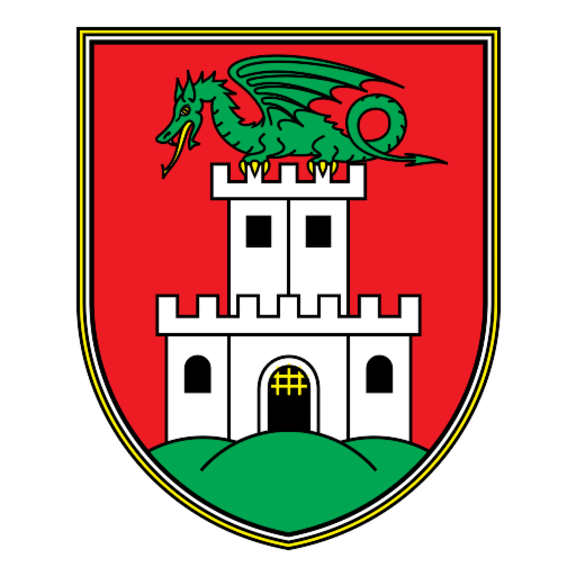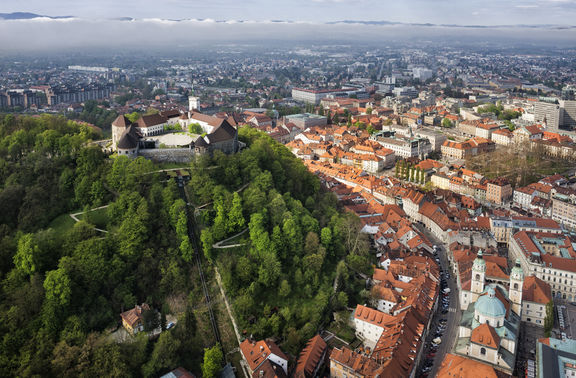Difference between revisions of "Municipality of Ljubljana"
(infobox fix) |
|||
| Line 18: | Line 18: | ||
}} | }} | ||
{{contact | {{contact | ||
| − | |name = | + | |name = Cultural and Research Activities Department |
| − | + | |street = Ambrožev trg 7 | |
| − | |street = | ||
|town = SI-1000 Ljubljana | |town = SI-1000 Ljubljana | ||
|telephone = 386 (0)1 306 4845 | |telephone = 386 (0)1 306 4845 | ||
| Line 26: | Line 25: | ||
|telephone = 386 (0)1 306 4845 | |telephone = 386 (0)1 306 4845 | ||
|fax = 386 (0)1 306 4832 | |fax = 386 (0)1 306 4832 | ||
| + | |contacts = {{contact | ||
| + | |name = Dr. Uroš Grilc | ||
| + | |role = Head of Board for cultural and research activities | ||
|email = uros.grilc@ljubljana.si | |email = uros.grilc@ljubljana.si | ||
| + | }} | ||
}} | }} | ||
| − | |||
| − | |||
| − | |||
| − | |||
| − | |||
| − | |||
[[Ljubljana Urban Municipality]] covers a total area of 275 square kilometres and has a population of 264,269 people (2002) living in 38 settlements. It is one of 11 Slovene Urban Municipalities and incorporates the Slovene capital city of Ljubljana, the country’s largest city as well as its political, administrative, economic, educational and cultural centre. The Municipality of Ljubljana has signed a number of inter-municipal agreements with other cities of the world: in 1964 with Pesaro and Parma (Italy), in 1966 with Chemnitz (Germany), in 1967 with Bratislava (Slovakia), in 1969 with Sousse (Tunisia), in 1977 with Wiesbaden (Germany) and Tbilisi (Georgia), in 1979 with Leverkusen (Germany) and Rijeka (Croatia), in 1981 with Chengdu (China), in 1999 with Vienna (Austria) in 2000 with Athens (Greece) and Moscow (Russia), in 2001 with Zagreb (Croatia) and in 2002 with Sarajevo (Bosnia and Herzegovina). | [[Ljubljana Urban Municipality]] covers a total area of 275 square kilometres and has a population of 264,269 people (2002) living in 38 settlements. It is one of 11 Slovene Urban Municipalities and incorporates the Slovene capital city of Ljubljana, the country’s largest city as well as its political, administrative, economic, educational and cultural centre. The Municipality of Ljubljana has signed a number of inter-municipal agreements with other cities of the world: in 1964 with Pesaro and Parma (Italy), in 1966 with Chemnitz (Germany), in 1967 with Bratislava (Slovakia), in 1969 with Sousse (Tunisia), in 1977 with Wiesbaden (Germany) and Tbilisi (Georgia), in 1979 with Leverkusen (Germany) and Rijeka (Croatia), in 1981 with Chengdu (China), in 1999 with Vienna (Austria) in 2000 with Athens (Greece) and Moscow (Russia), in 2001 with Zagreb (Croatia) and in 2002 with Sarajevo (Bosnia and Herzegovina). | ||
Revision as of 11:53, 21 May 2010
{{Infobox |name = Mestna občina Ljubljana |street = Mestni trg 1 |town = SI-1000 Ljubljana |website = http://www.ljubljana.si/ |email = glavna.pisarna@ljubljana.si |telephone = 386 (0) 1 306 1000 |fax = 386 (0) 1 306 1001 |contacts =
Ljubljana Urban Municipality covers a total area of 275 square kilometres and has a population of 264,269 people (2002) living in 38 settlements. It is one of 11 Slovene Urban Municipalities and incorporates the Slovene capital city of Ljubljana, the country’s largest city as well as its political, administrative, economic, educational and cultural centre. The Municipality of Ljubljana has signed a number of inter-municipal agreements with other cities of the world: in 1964 with Pesaro and Parma (Italy), in 1966 with Chemnitz (Germany), in 1967 with Bratislava (Slovakia), in 1969 with Sousse (Tunisia), in 1977 with Wiesbaden (Germany) and Tbilisi (Georgia), in 1979 with Leverkusen (Germany) and Rijeka (Croatia), in 1981 with Chengdu (China), in 1999 with Vienna (Austria) in 2000 with Athens (Greece) and Moscow (Russia), in 2001 with Zagreb (Croatia) and in 2002 with Sarajevo (Bosnia and Herzegovina).
The Board for cultural activities of the City Council is responsible for municipal funding of arts and culture and other activities in the field. Annually the Župančič Award is bestowed to the outstanding creators in the field of arts and culture.
Municipal cultural institutions include the Municipal Library of Ljubljana consisting of 6 libraries and their branches round the city, the City Museum and Galleries of Ljubljana, the International Centre of Graphic Arts, Ljubljana, the Festival Ljubljana and some recently (re)established institutions: Kinodvor Cinema, Kino Šiška Centre for Urban Culture and Španski borci Culture Centre.
See also
- Municipal Library of Ljubljana
- City Museum and Galleries of Ljubljana
- International Centre of Graphic Arts, Ljubljana
- Kinodvor Cinema
- Cultural centres / venues
- Župančič Award of the City of Ljubljana
External links
- Ljubljana Urban Municipality website (in English)
- Ljubljana on Wikipedia
- Visit Ljubljana - website by Ljubljana Tourist Board
- Ljubljana photos on Kraji.eu




